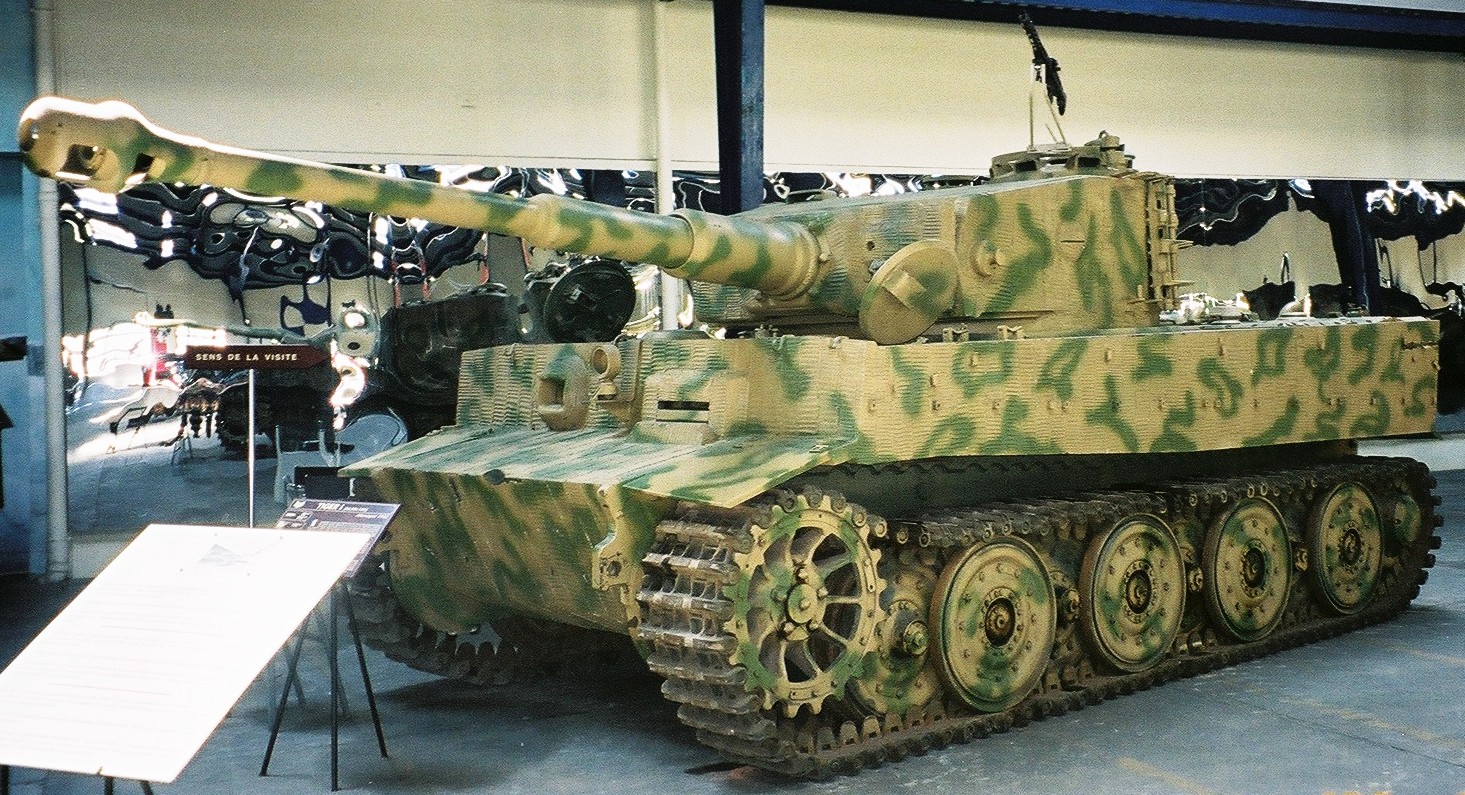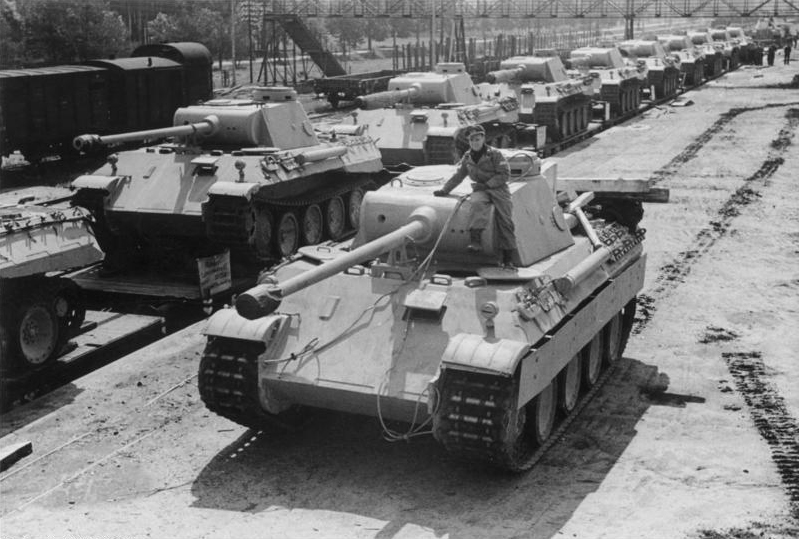Tiger I + Panther = Tiger II Tank!!
The Tiger II tank, also known as the King Tiger, was an impressive piece of German equipment during WWII. Personally, I believe it was a stepping stone from the old prehistoric tank designs of early WWII tanks to modern cold war era designs. Looking at the tank today in any museum makes you feel like you are standing next to a 1960 – 1970 tank not a tank that was introduced in the mid-40s. It was the heaviest tank of WWII and employed the most hard hitting gun of any tank in the war.
Image from Wikipedia
Looking back at the King Tiger's year of introduction, it seems that work on this tank started right after its successful predecessor the Tiger I. The reason behind this was to have ready a tank that would encounter any future designs that the Allies would introduce to counter the Tiger I. So we can say that the King Tiger’s design came to existence thanks other tanks that preceded it. Those tanks were the famous German Tiger I heavy tank and the Panther medium tank. Though both tanks were from different classes, each had characteristics that were combined together to produce a formidable tank.
Let us start with the Tiger I. The purpose of this tank was to counter the Allies' heavy tanks that were encountered in France and Africa. The design philosophy of this tank was different than its predecessors. Earlier German tanks balanced mobility, armor and firepower. The Tiger I compromised mobility for thicker armor and outstanding firepower. Those two features were later incorporated in the Tiger II tank.
Image from Wikipedia
The Panther on the other side was of a different class than the Tiger I. It was a medium tank that was intended to encounter the Soviet T-34. It was also designed with the same principles as previous German tanks that balanced mobility, armor and firepower. It shared an innovative feature with the T-34 called sloped armor. Slopped armor gave a tank the advantage of deflecting anti-armor rounds. This feature was incorporated in the Tiger II tank, which also featured sloped armor but much thicker than the Panther’s.
Images from Wikipedia. Panther then T-34. Notice the slopped armor design in both tanks.
Although the Tiger II seemed to have a combination of the best features of two of Germany’s finest tanks, it did not perform very well on the battlefield. That was due to a number of reasons:
- It was extremely underpowered due to its inefficient engines and so this affected its mobility,
- It was very complex and required a lot of maintenance. A luxury that was not available at the end of the war due to the scarcity of spare parts,
- It was complex to manufacture and so required a large number of skilled laborers to produce it in both the quantity and quality required. Again that was a luxury not available at the end of the war. Skilled labor was scarce and so the tank was not produced in the quantities and quality required. This affected its overall performance on the battlefield,
- The tank’s enormous engines required a lot of fuel which was also scarce at the end of the war because of the Allies’ intense strategic bombing campaign.
Irrespective of how efficient it was on the battlefield, the Tiger II will remain to be one of WWII's most impressive tank designs. Its inefficiency on the battlefield was due to factors that lead to the inefficiency of many other German vehicles at the time such as the Me-262 and Me-163 (that also suffered from poor quality production and lack of fuel).
I own a model of the 4 tanks that were discussed in this blog post. The German Tiger II, Tiger I, Panther and Soviet T-34. Notice the Tiger II's sloped armor, which is similar to that of the T-34 and Panther. Also notice its huge turret that is relatively close to that of the Tiger I.
Tags:
Recent Visitors to the site!
© 2025 Created by Matt Whisenant.
Powered by
![]()




